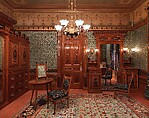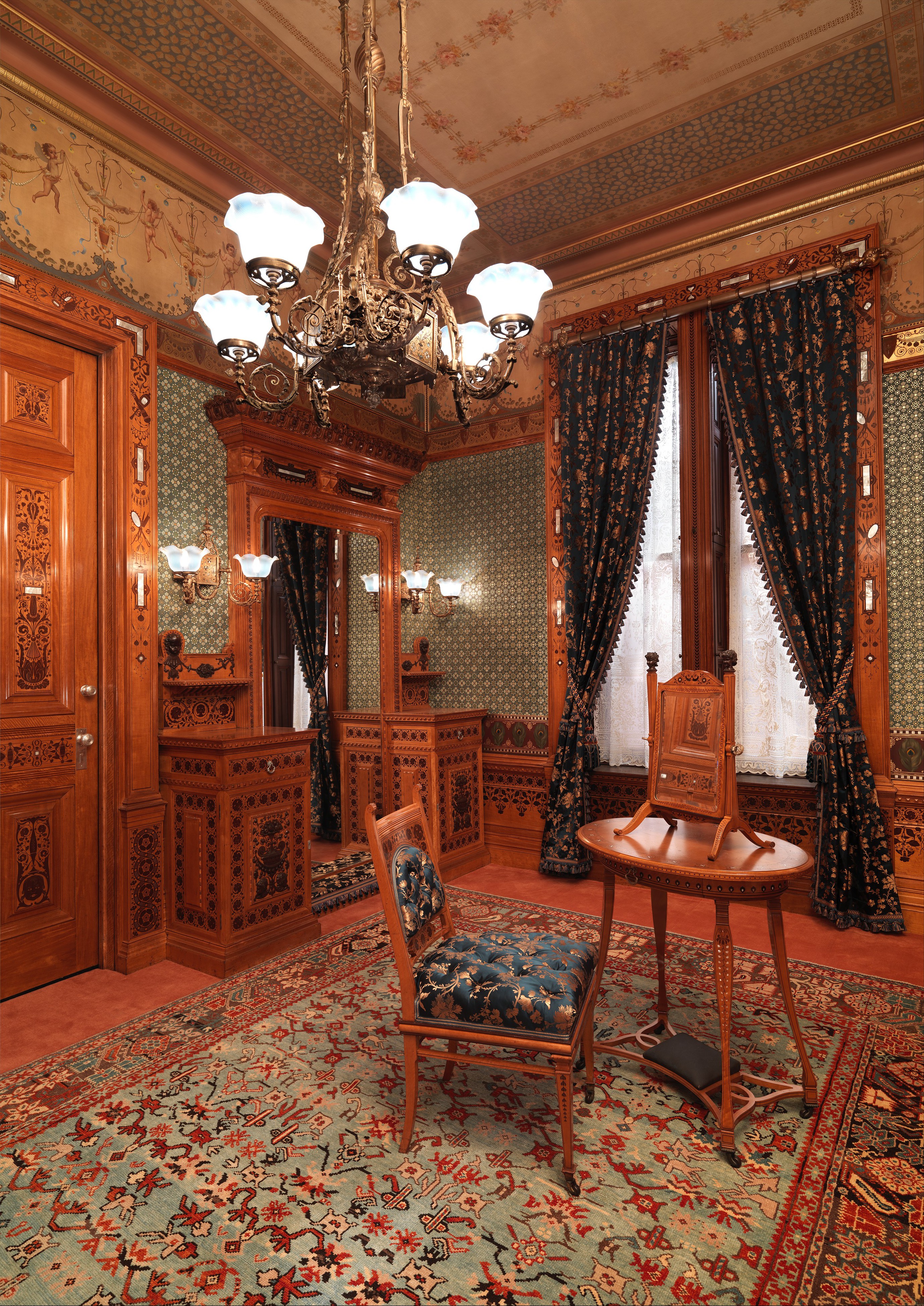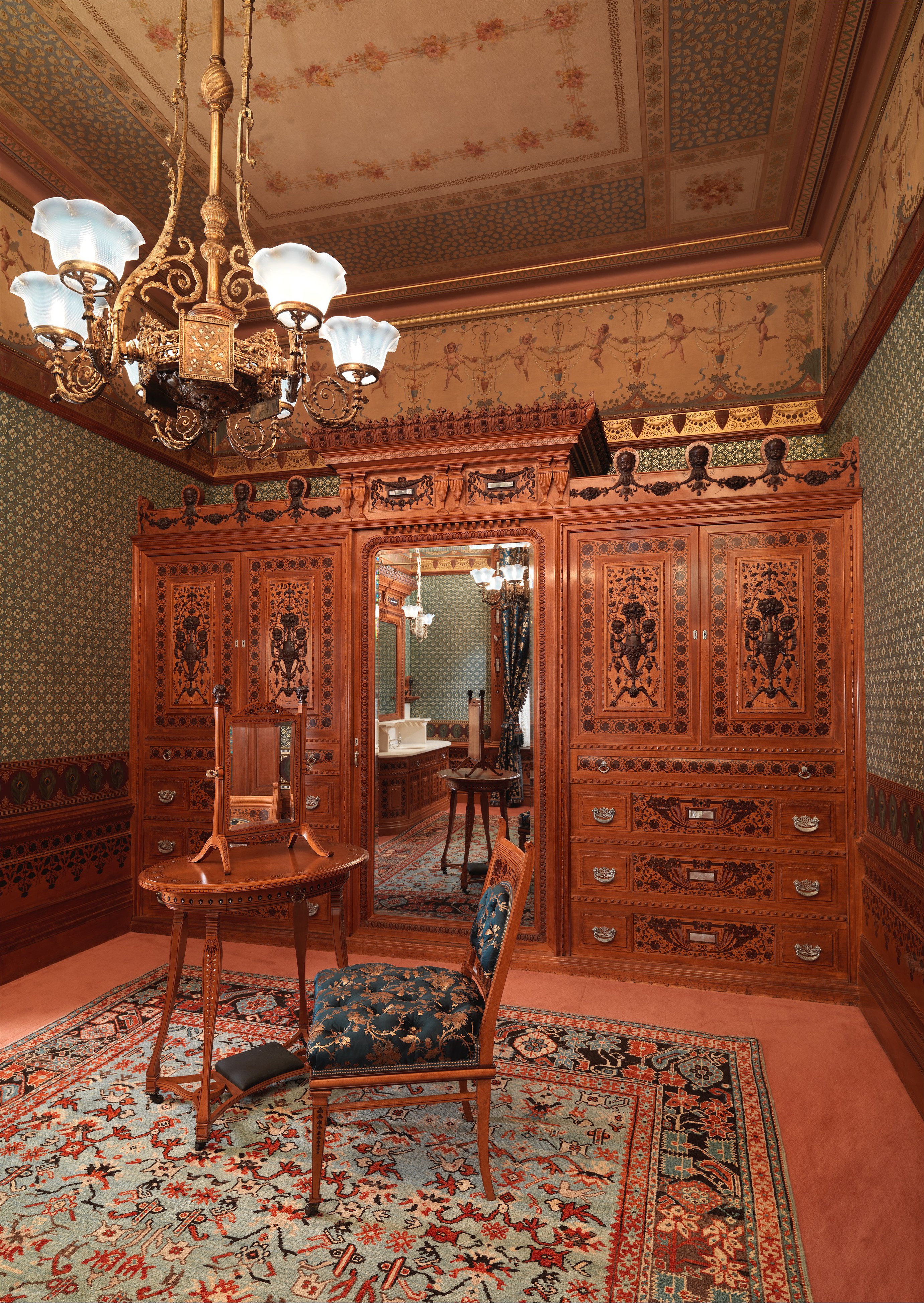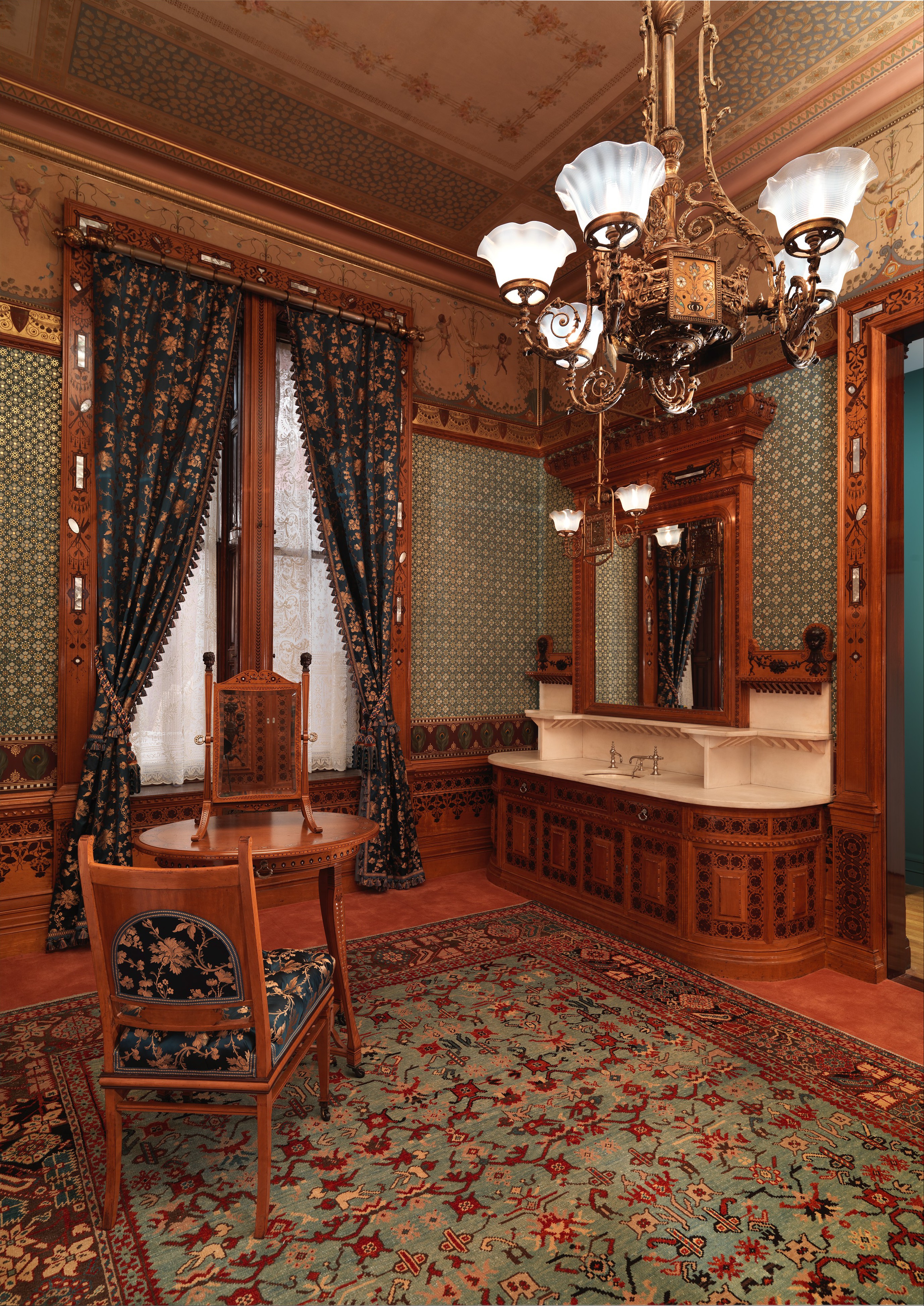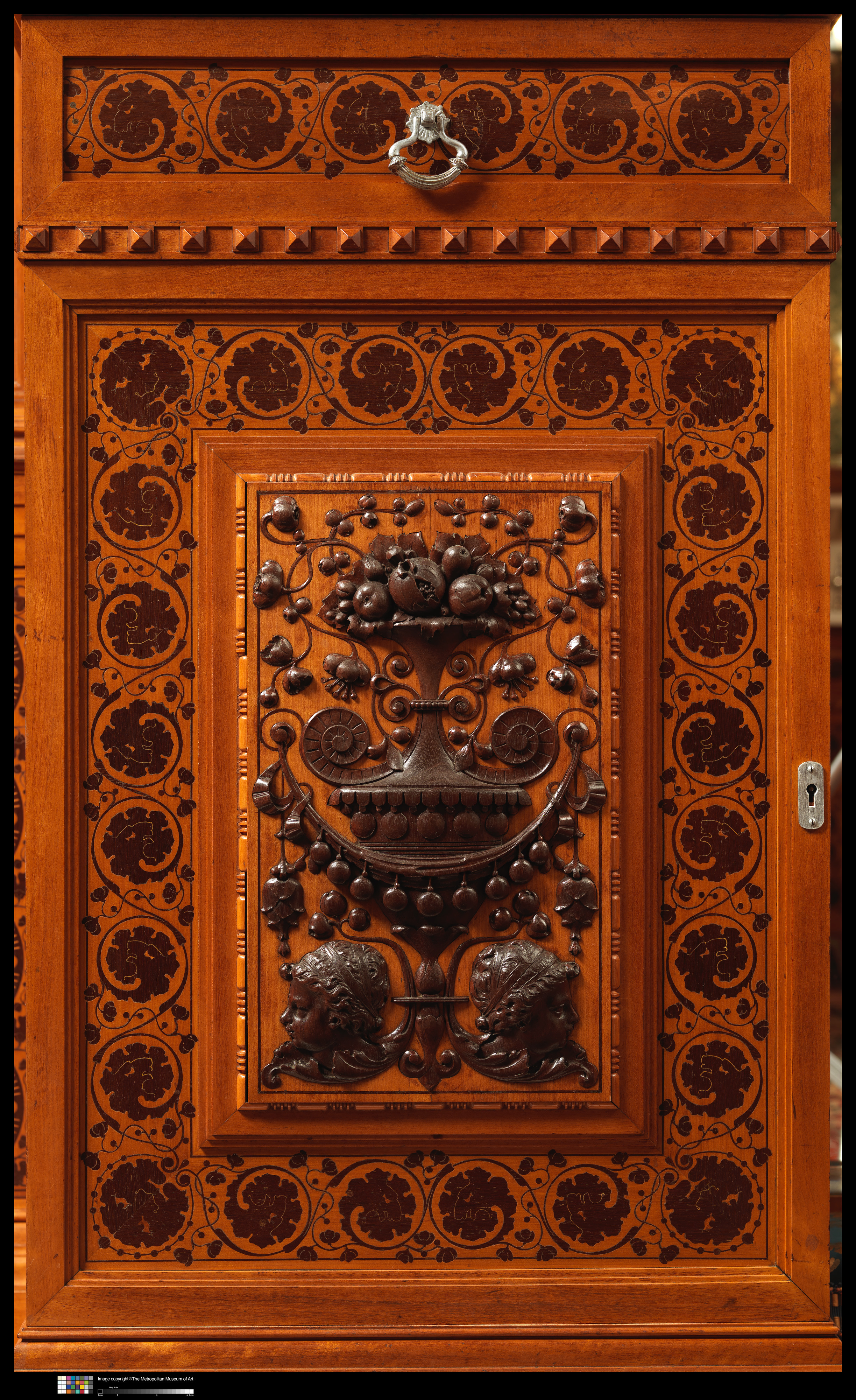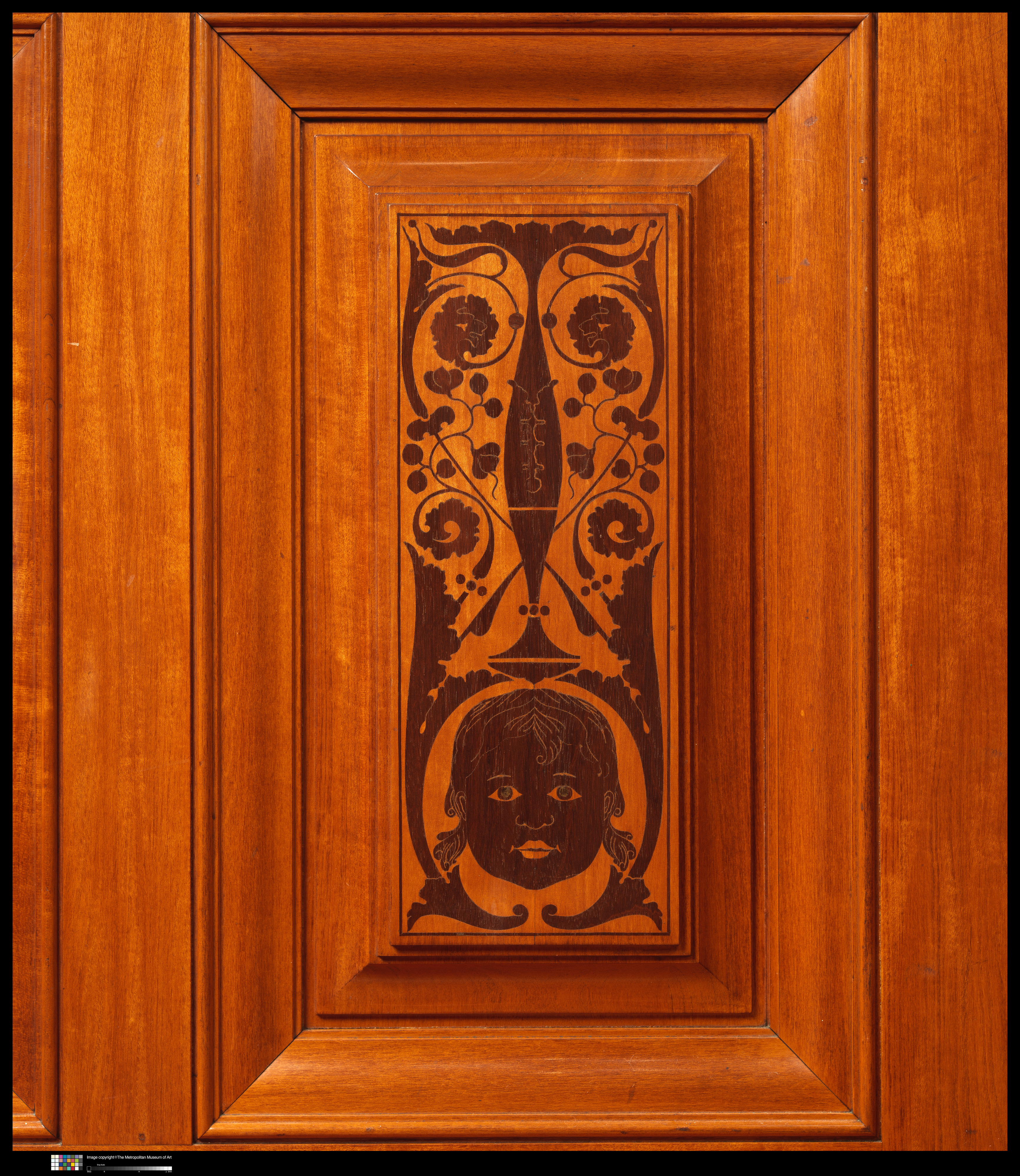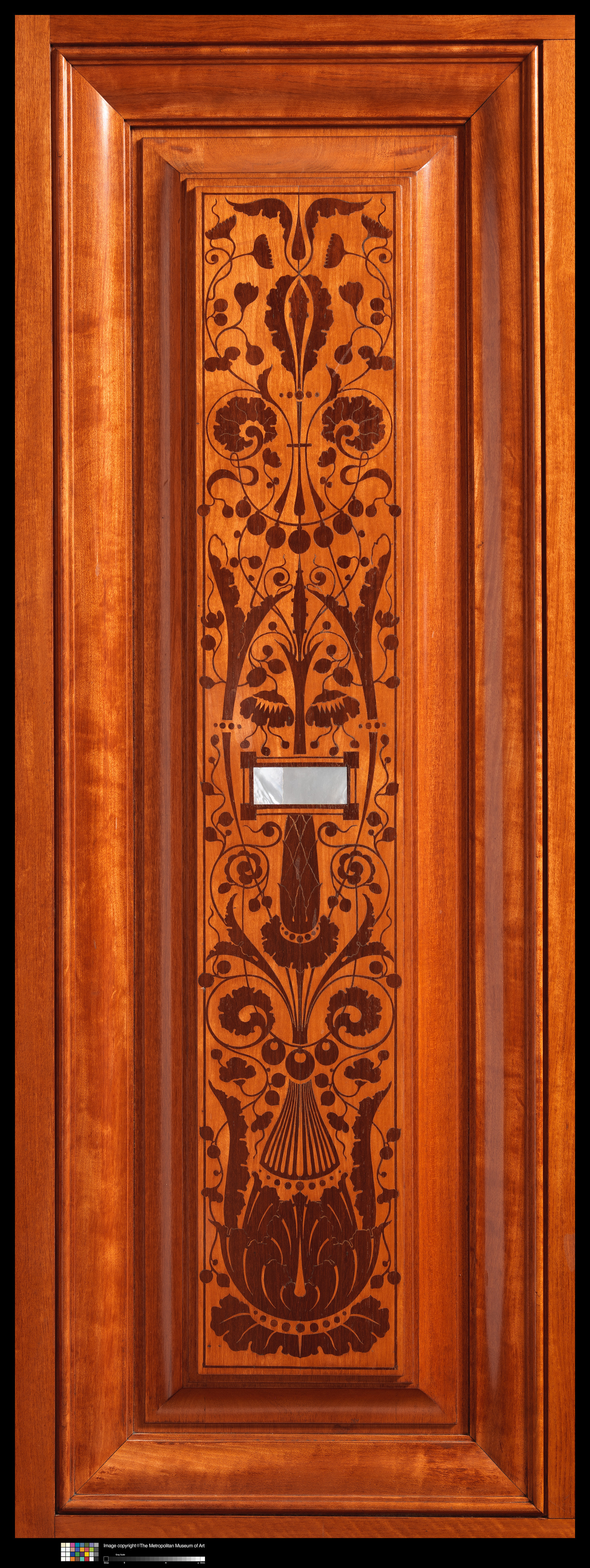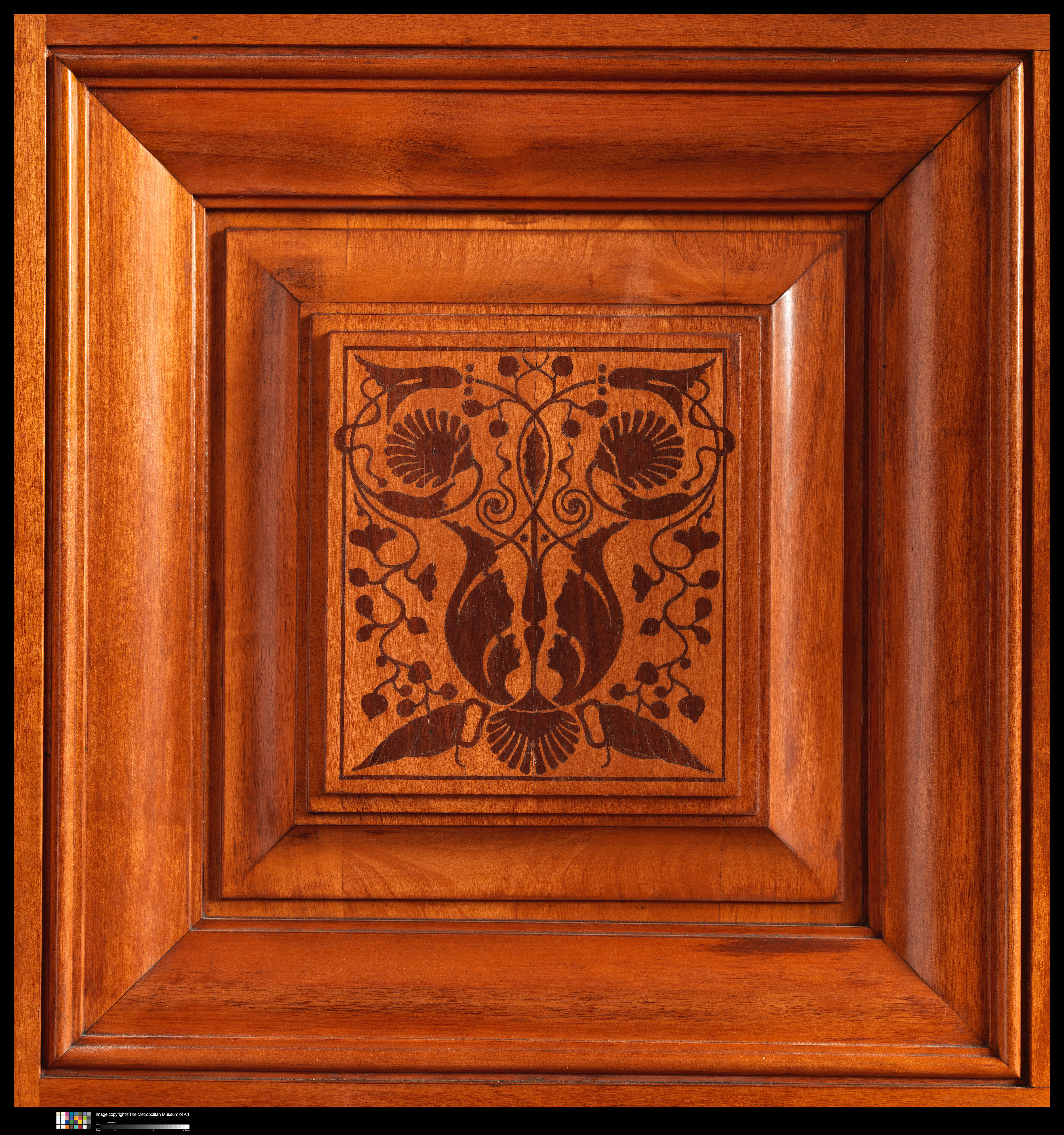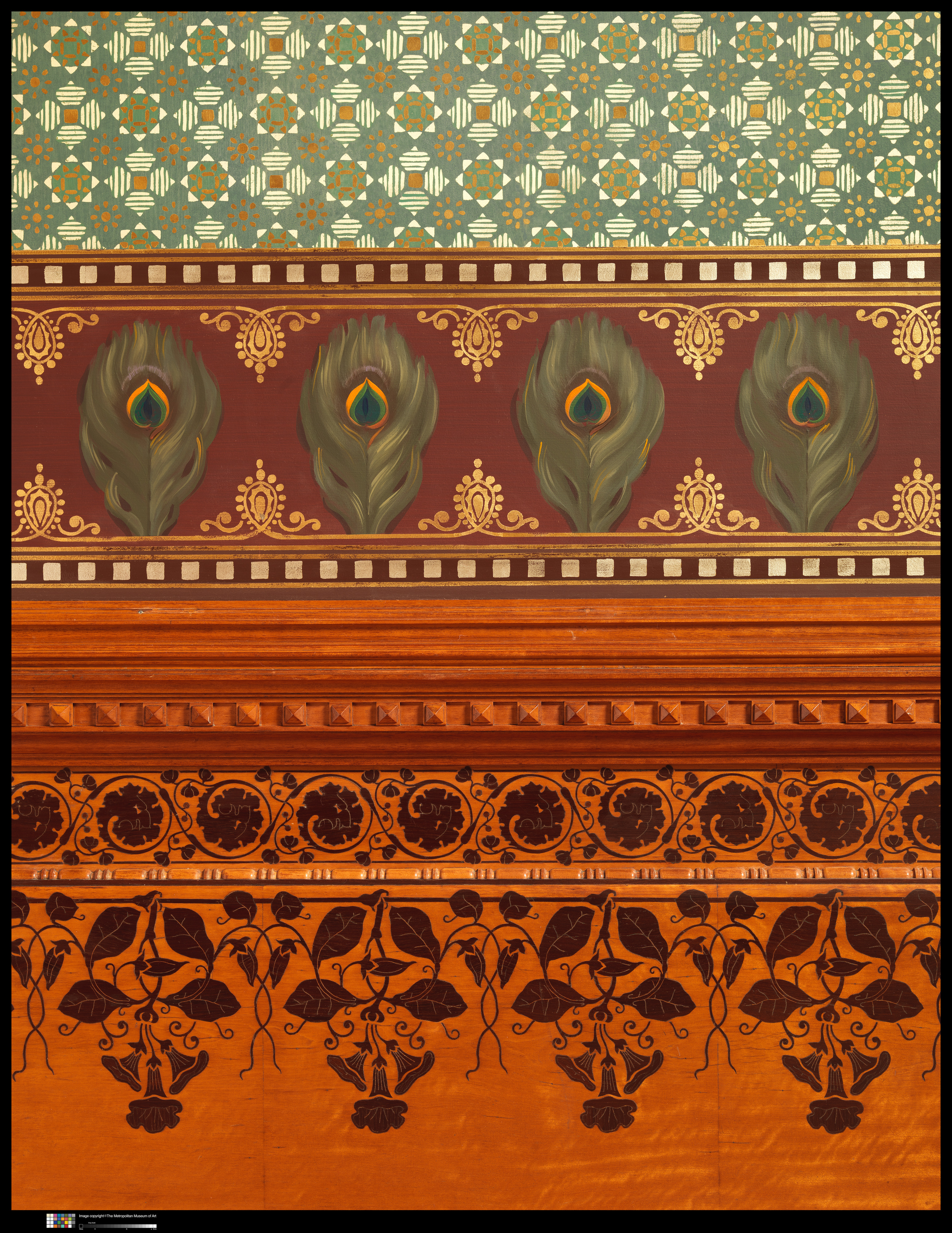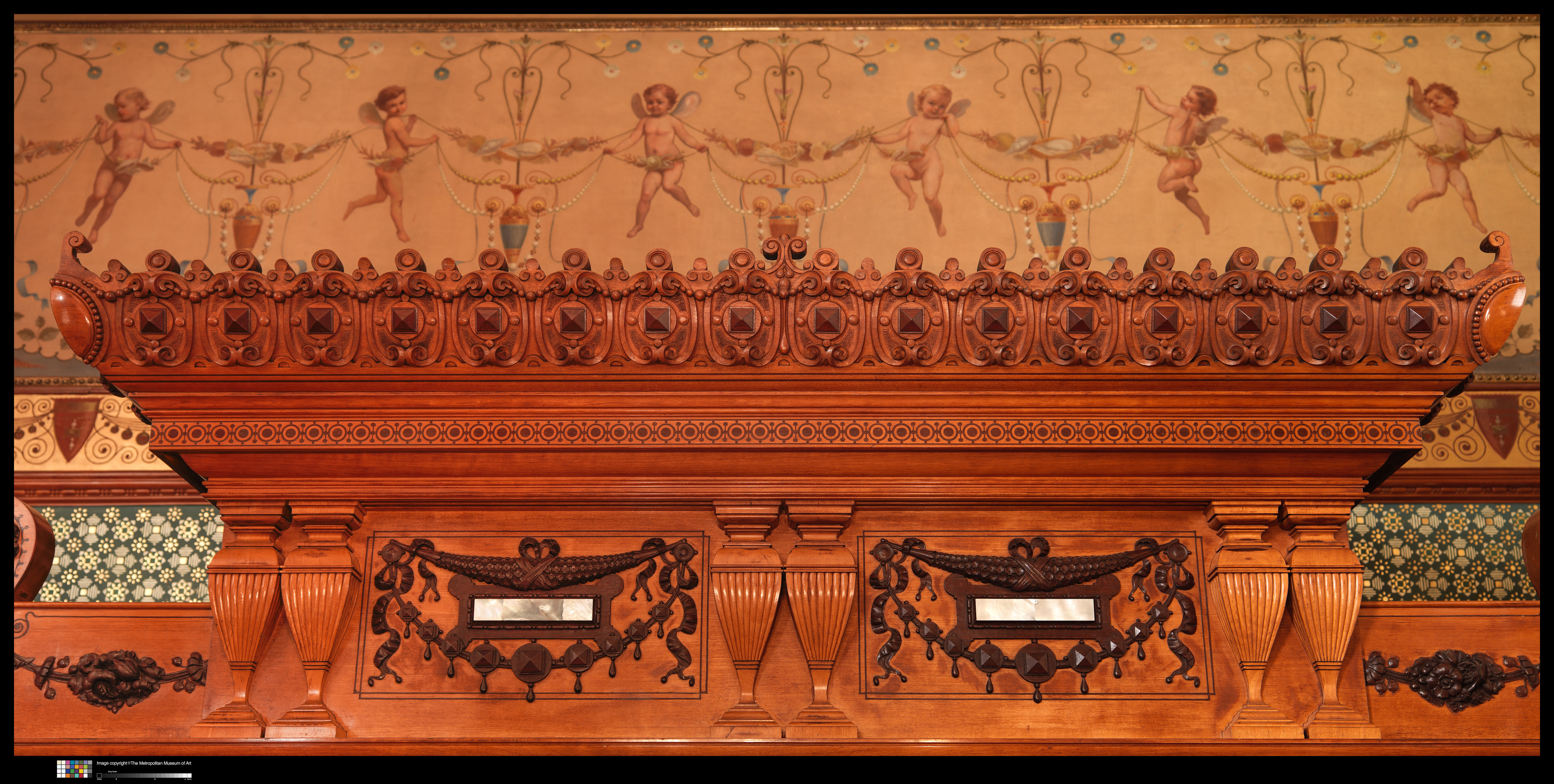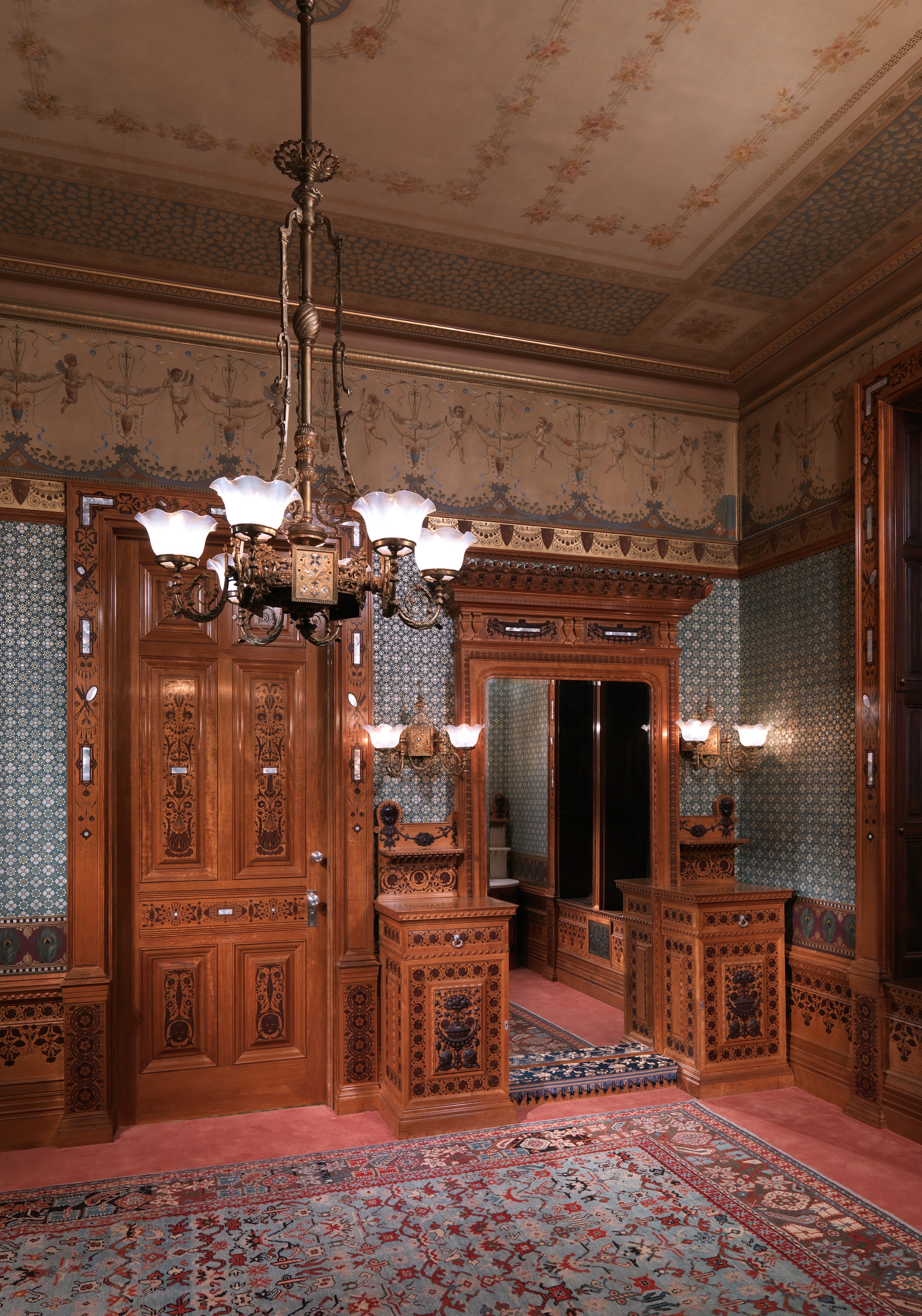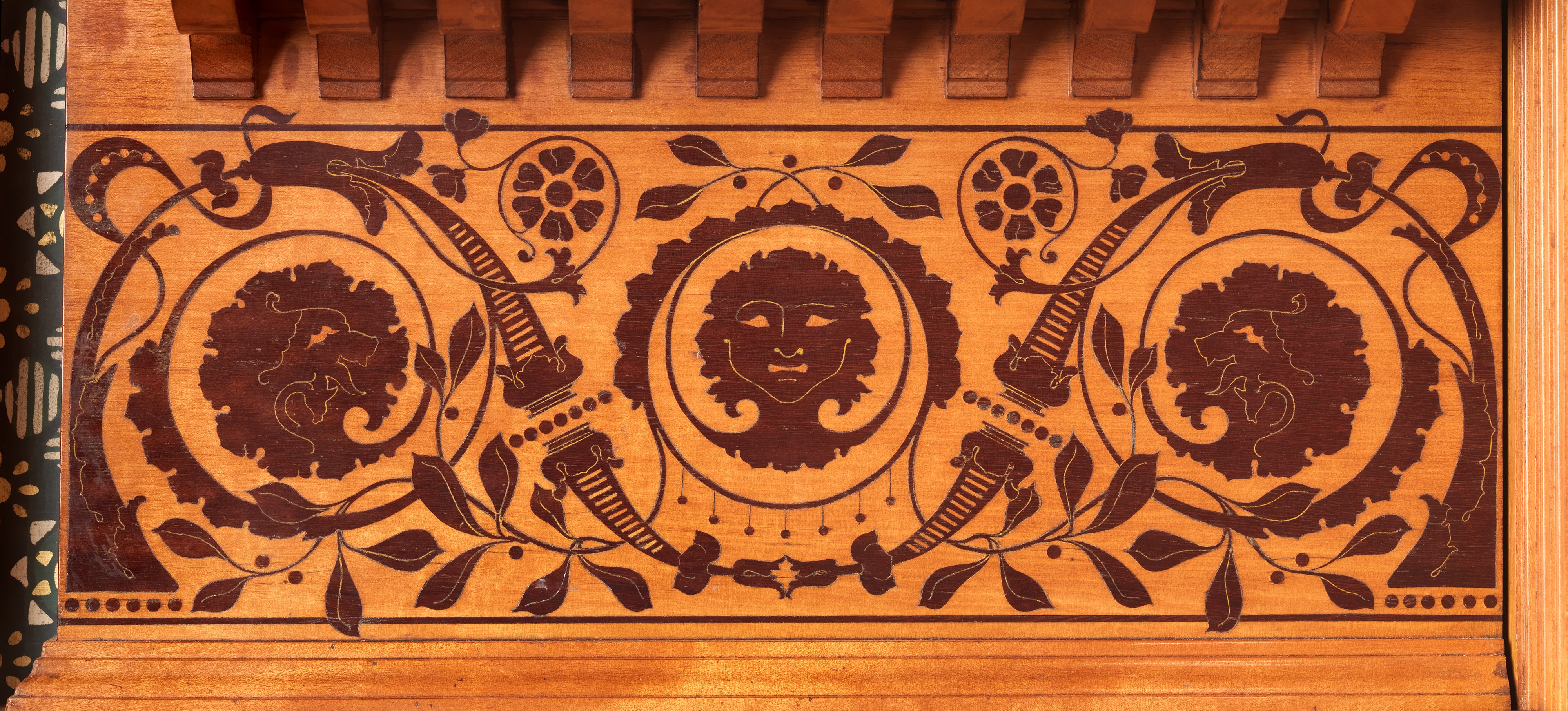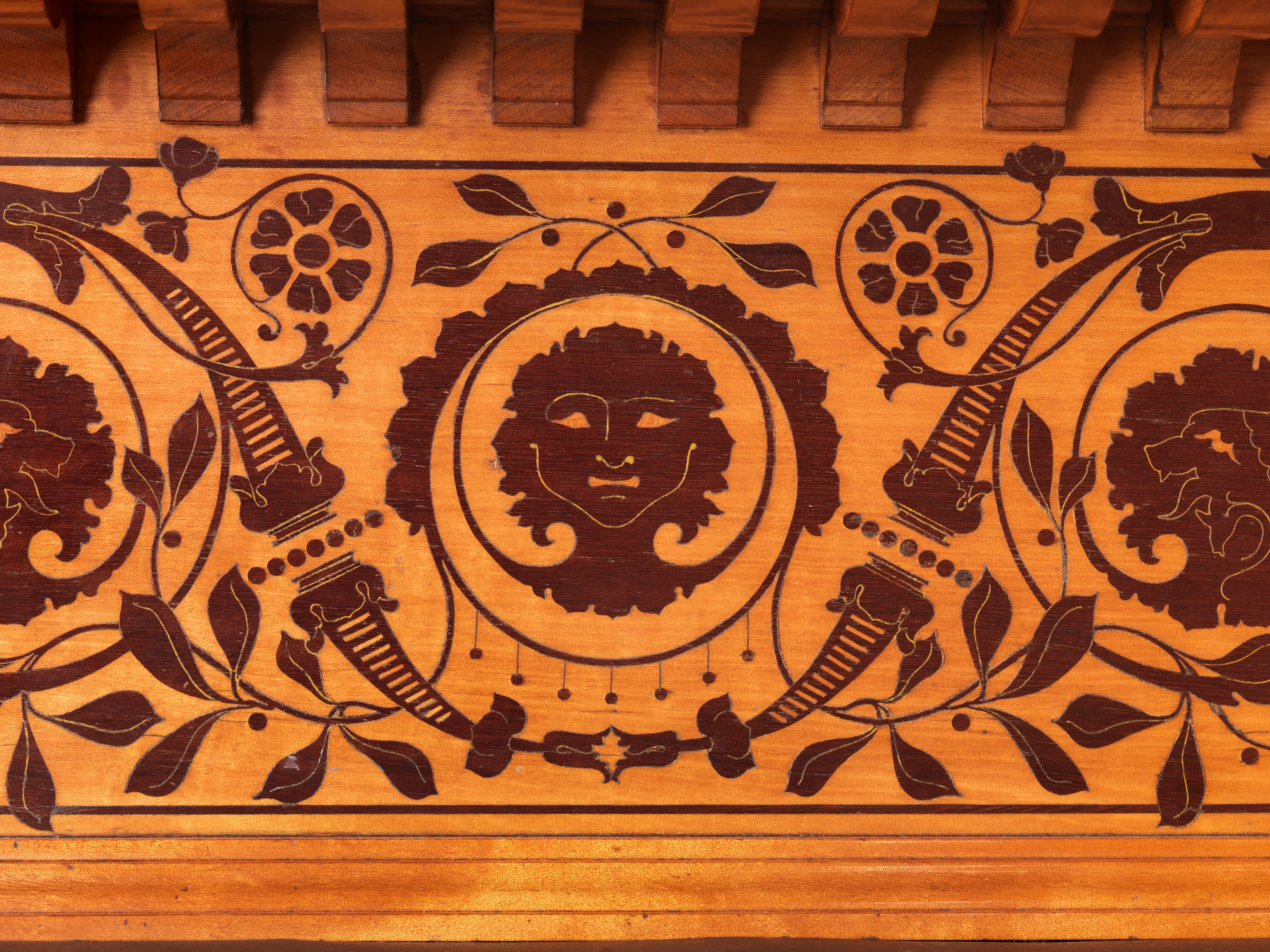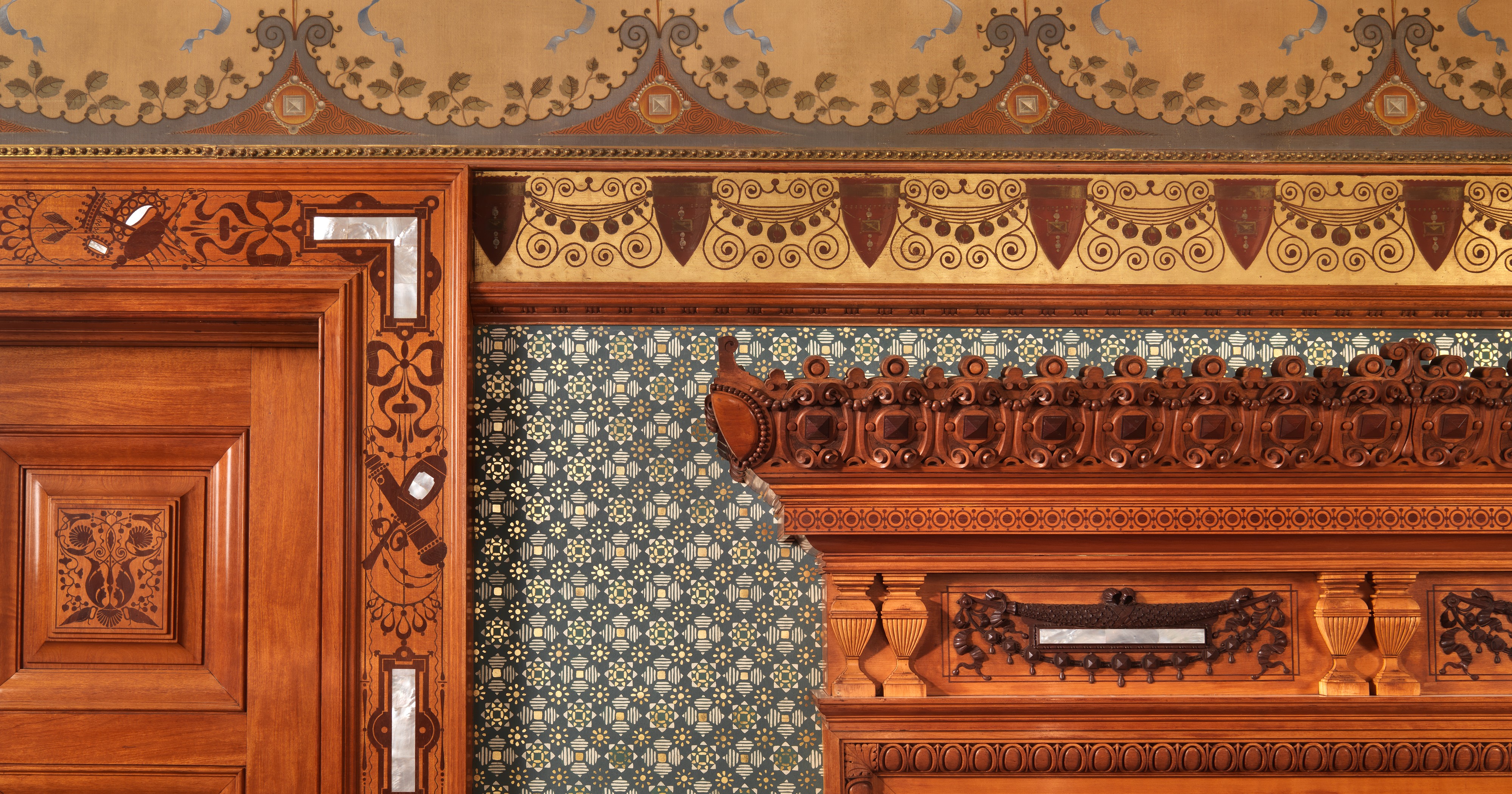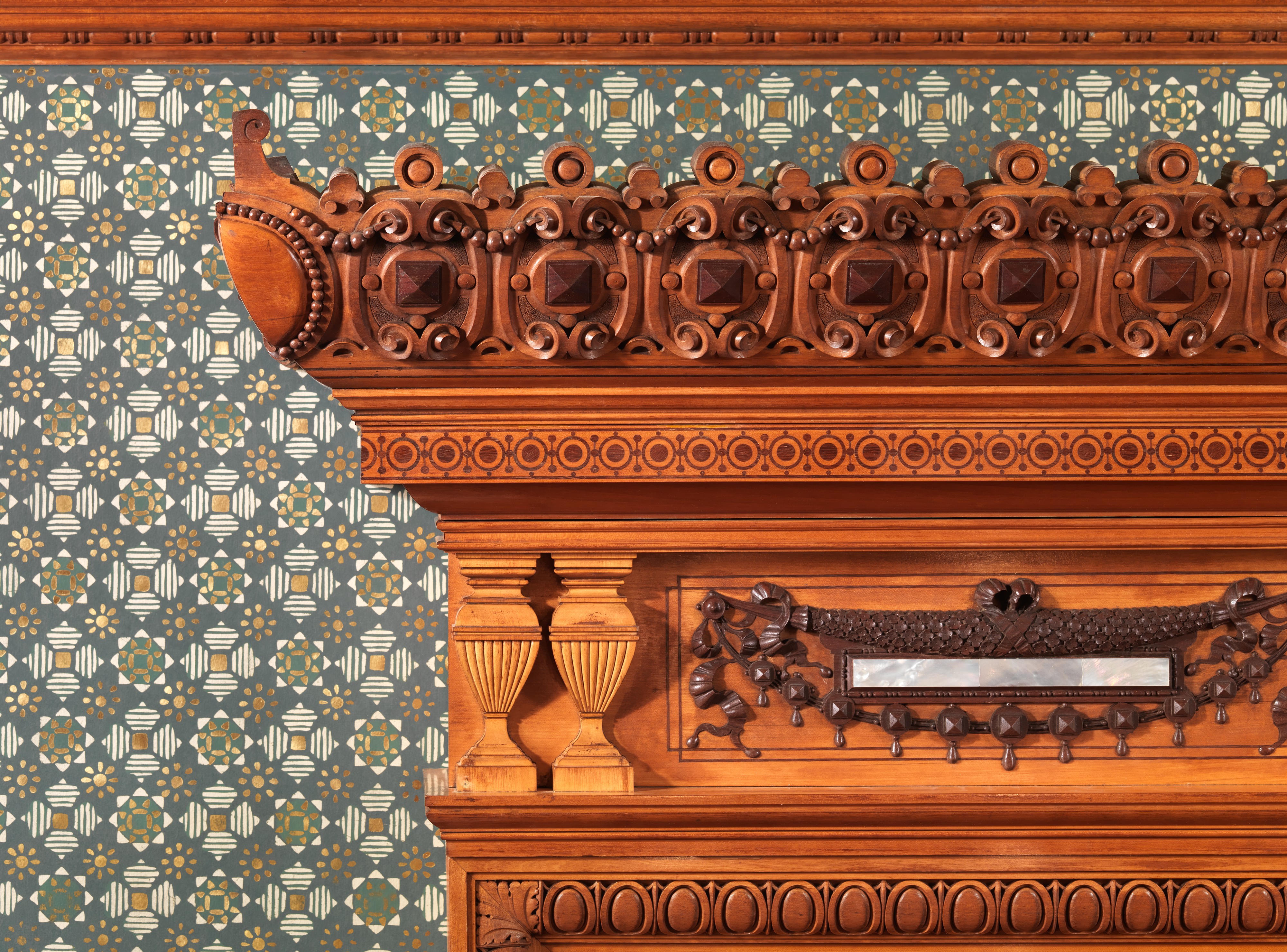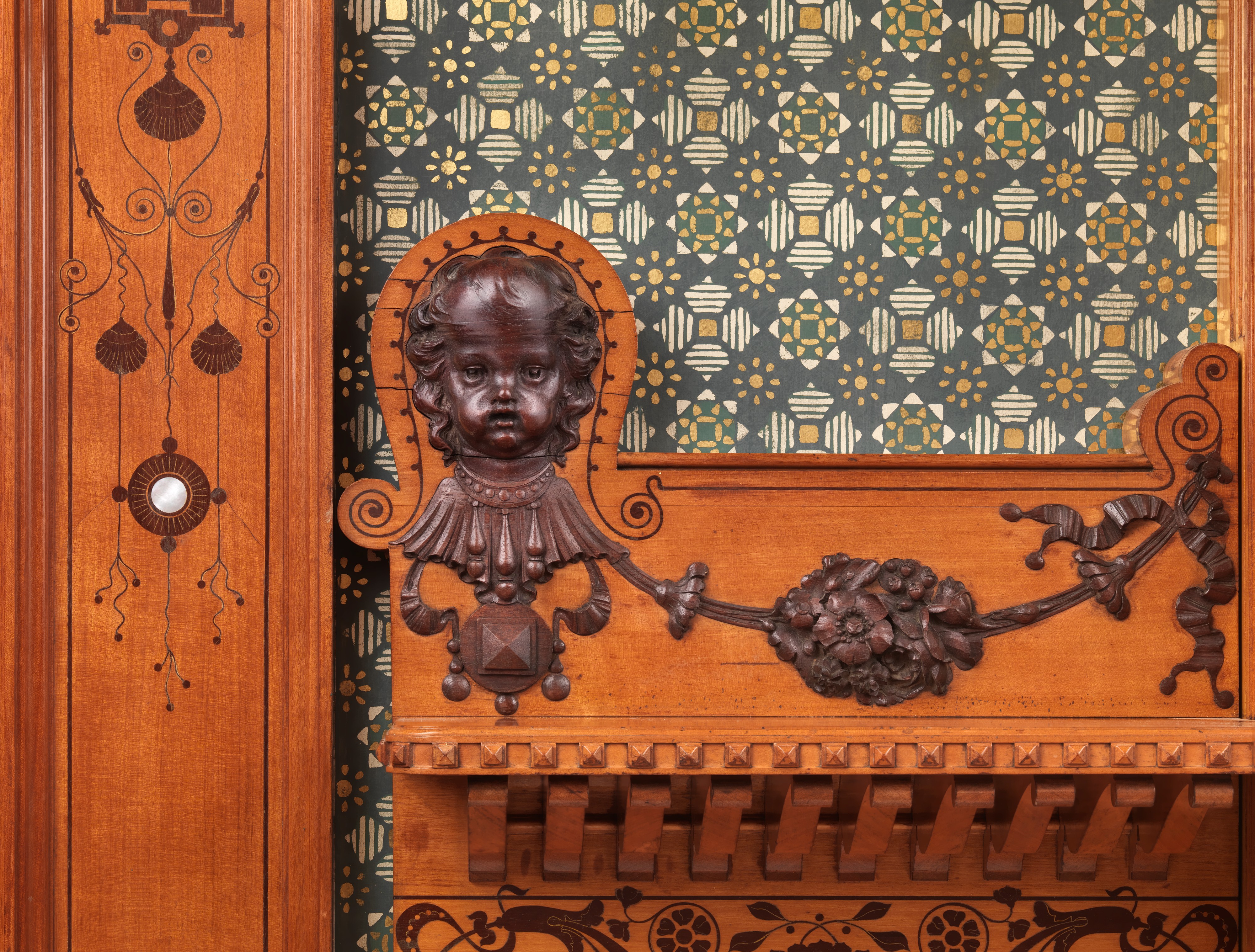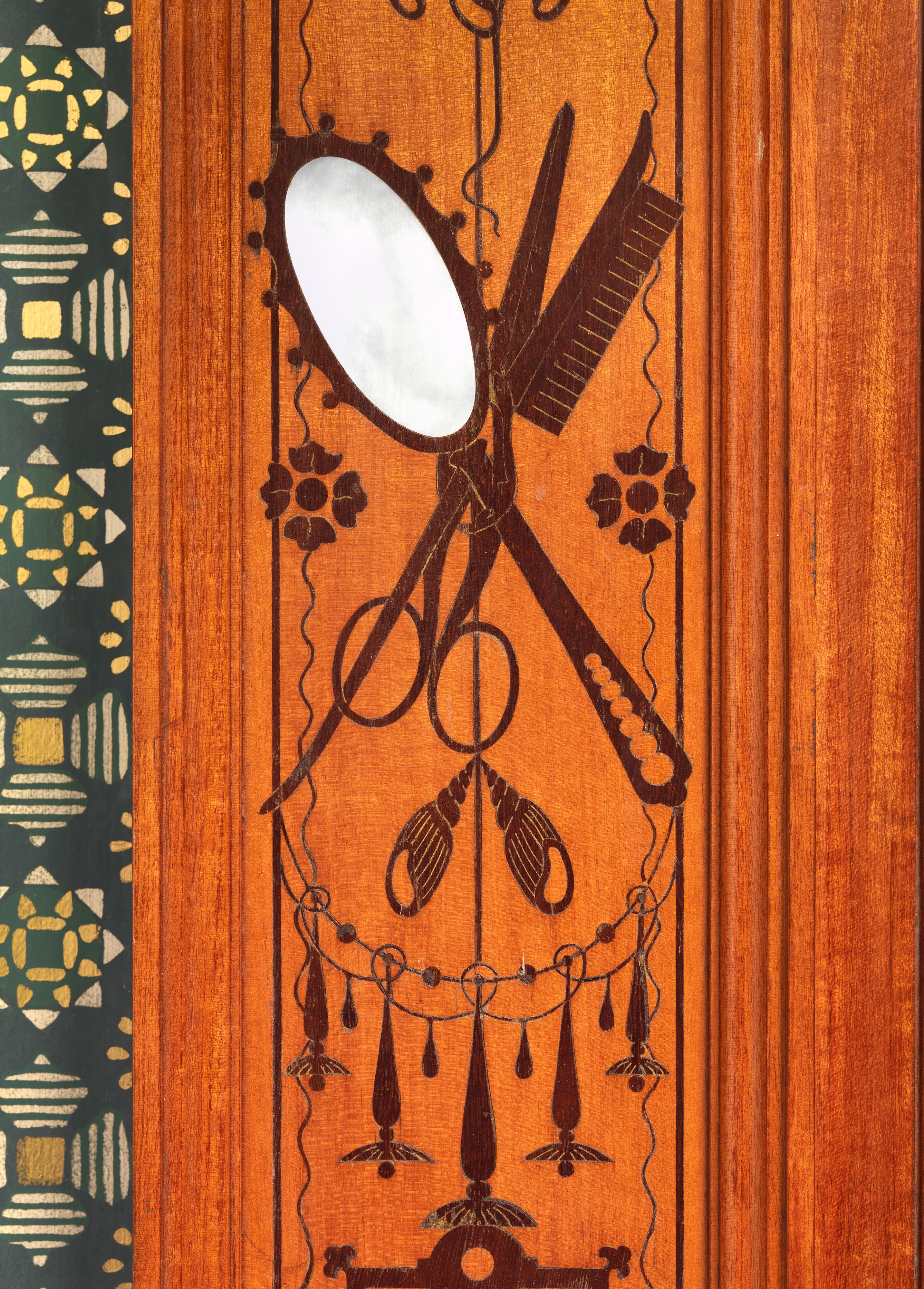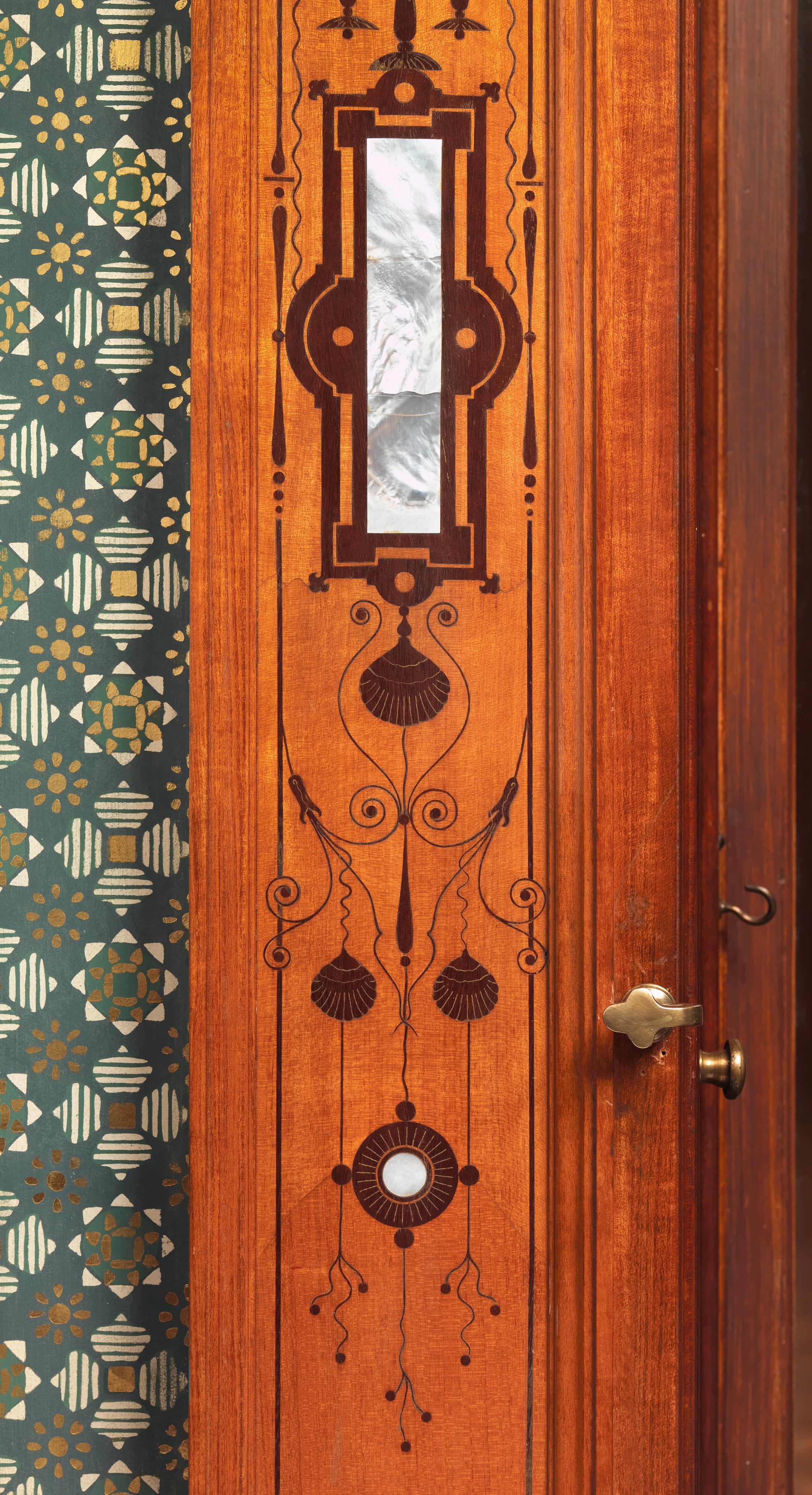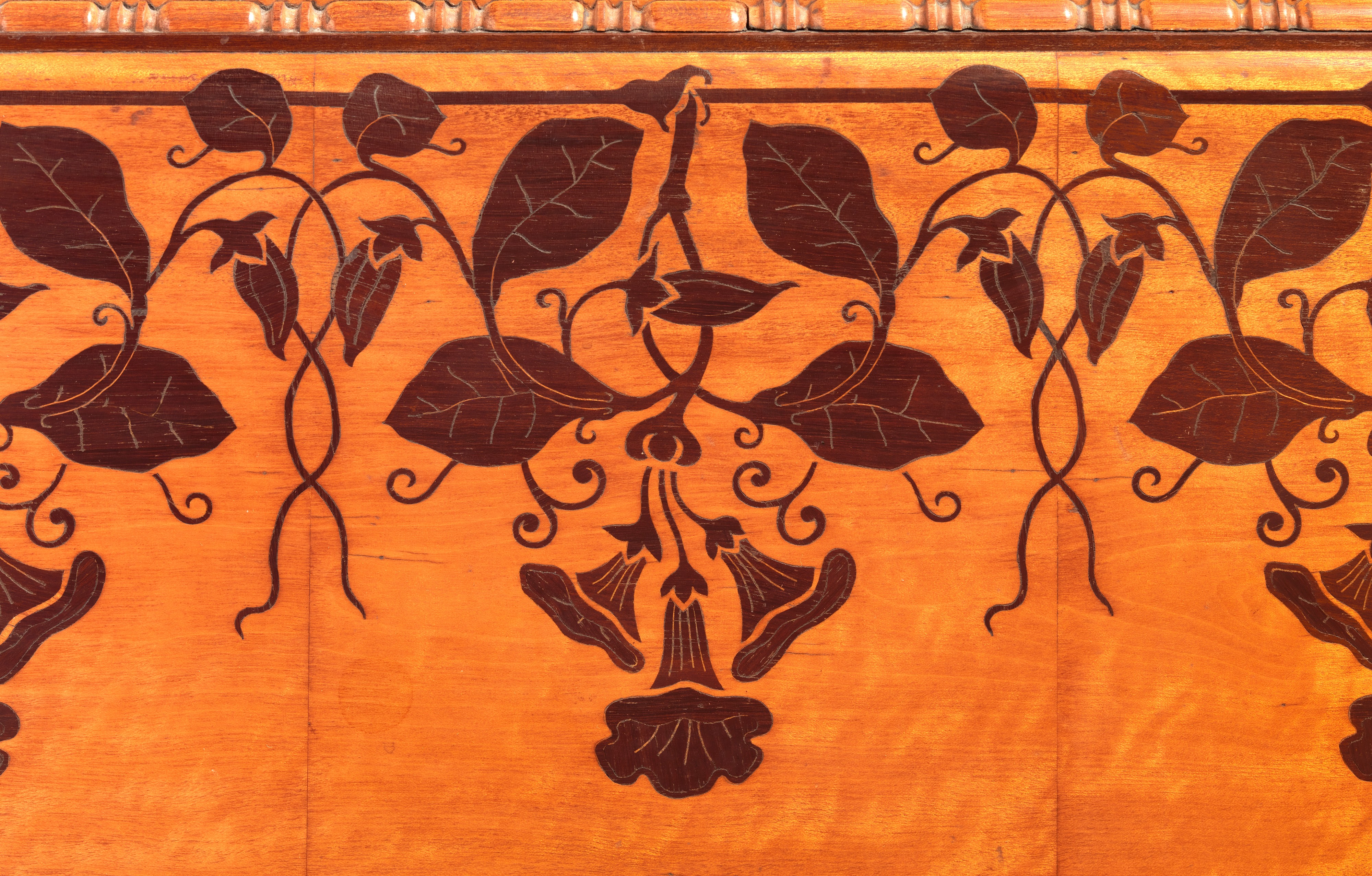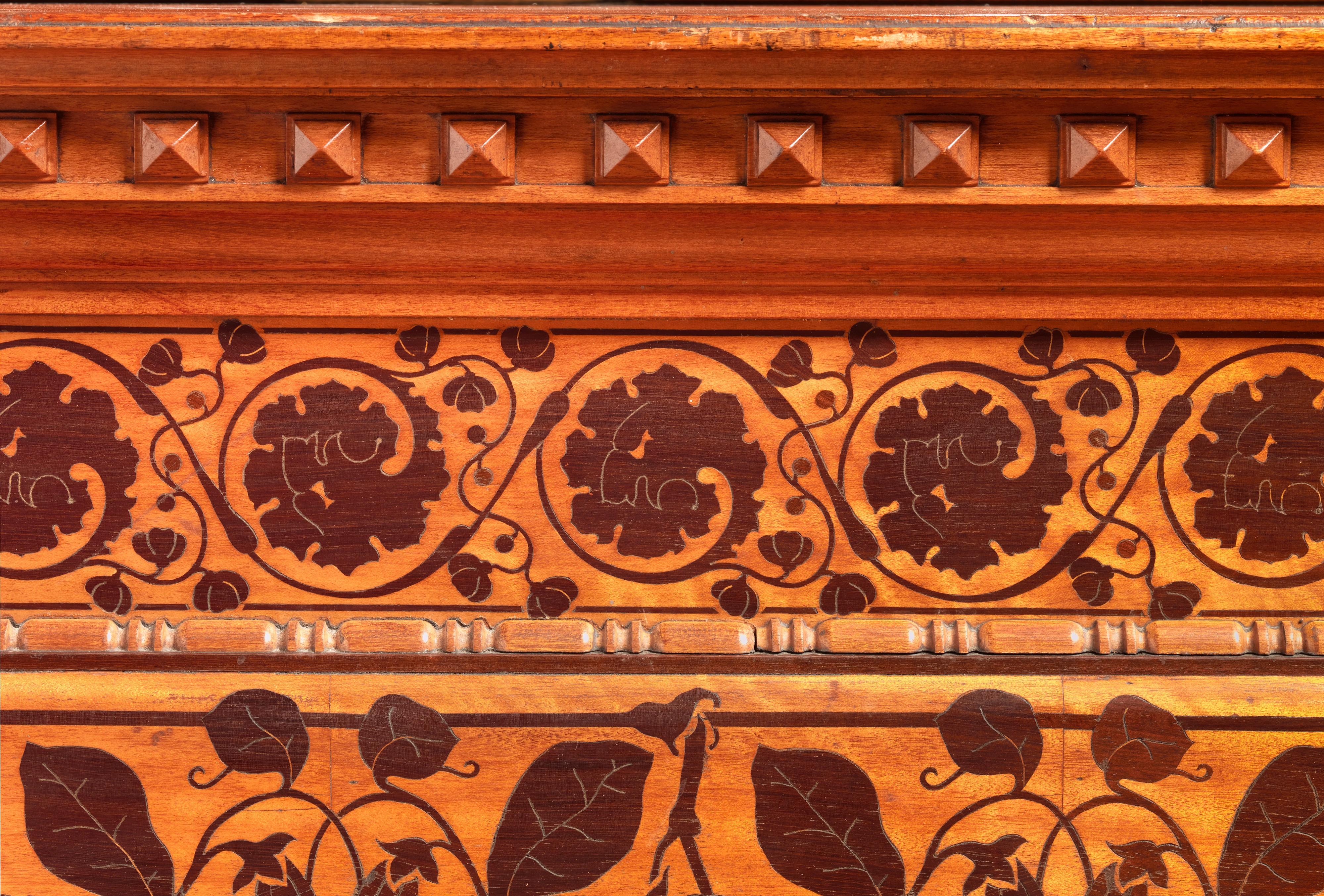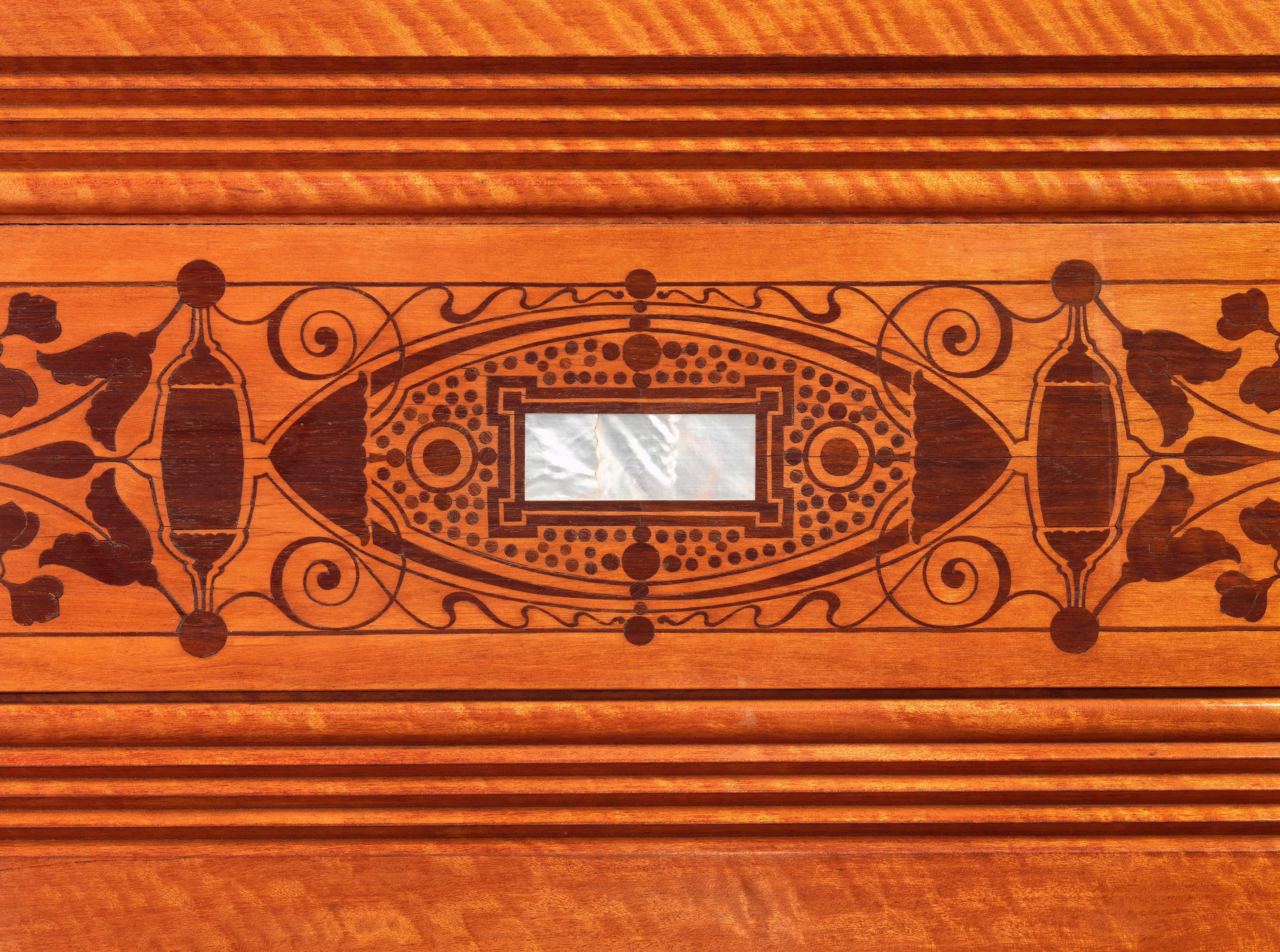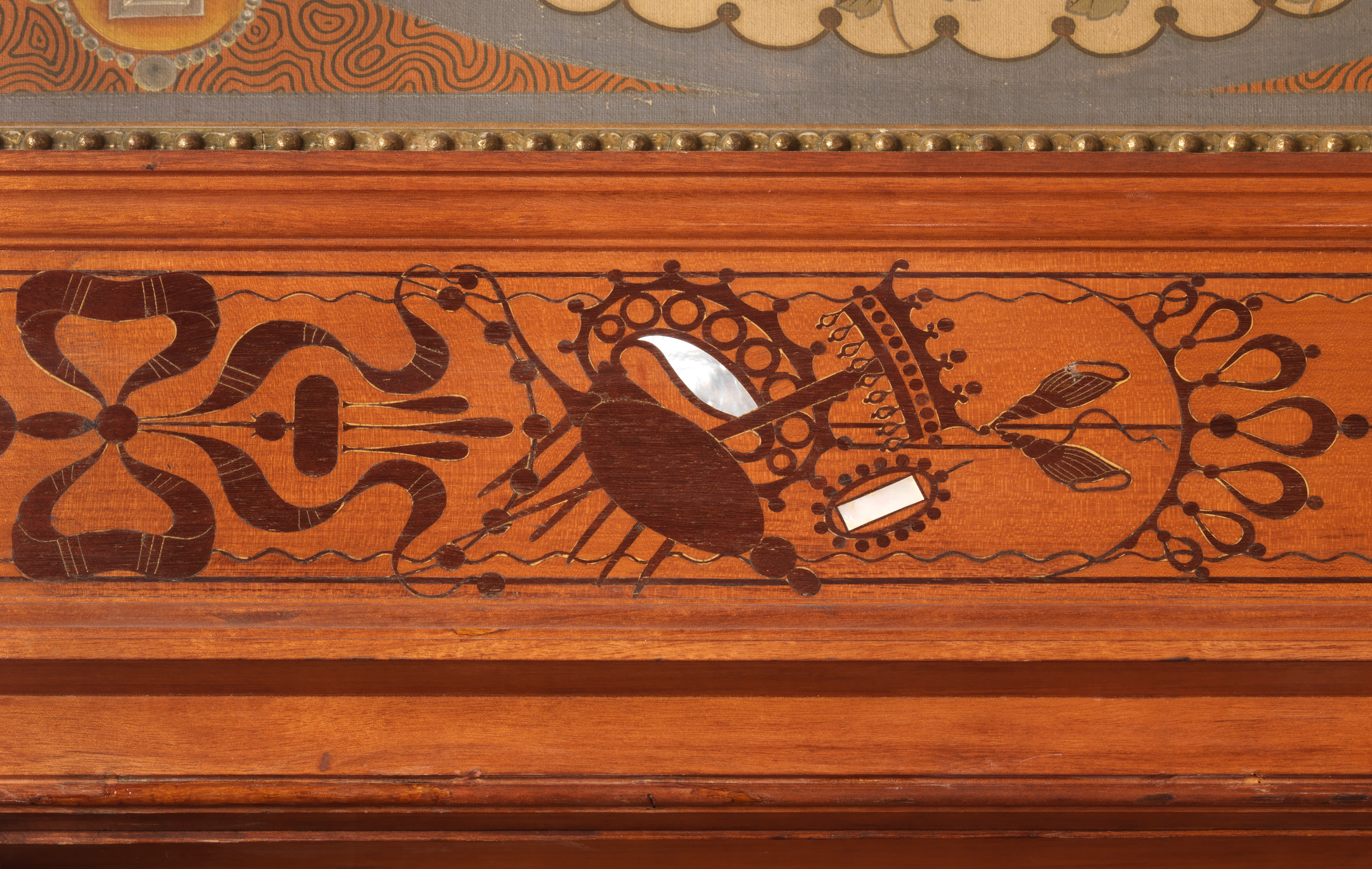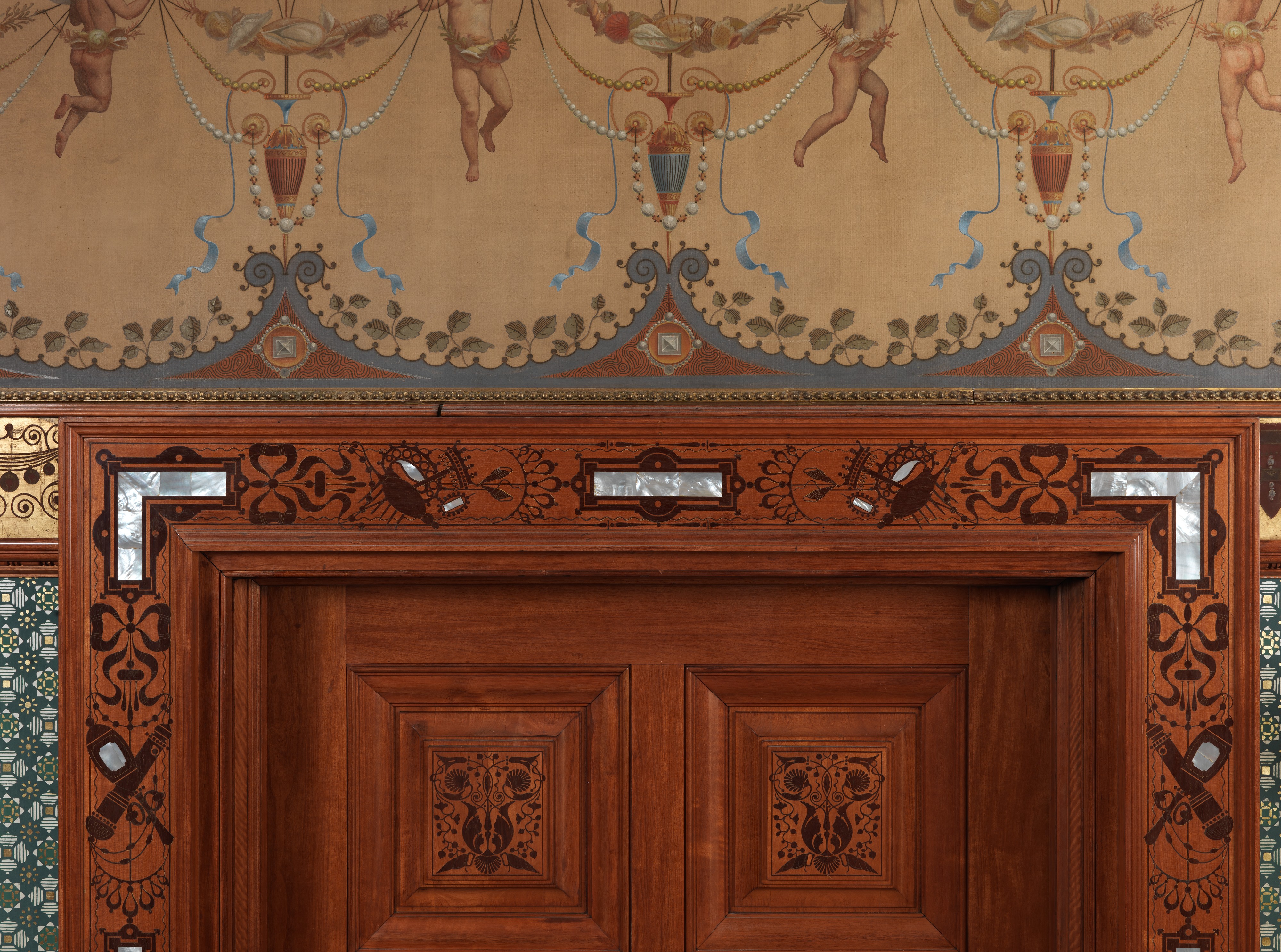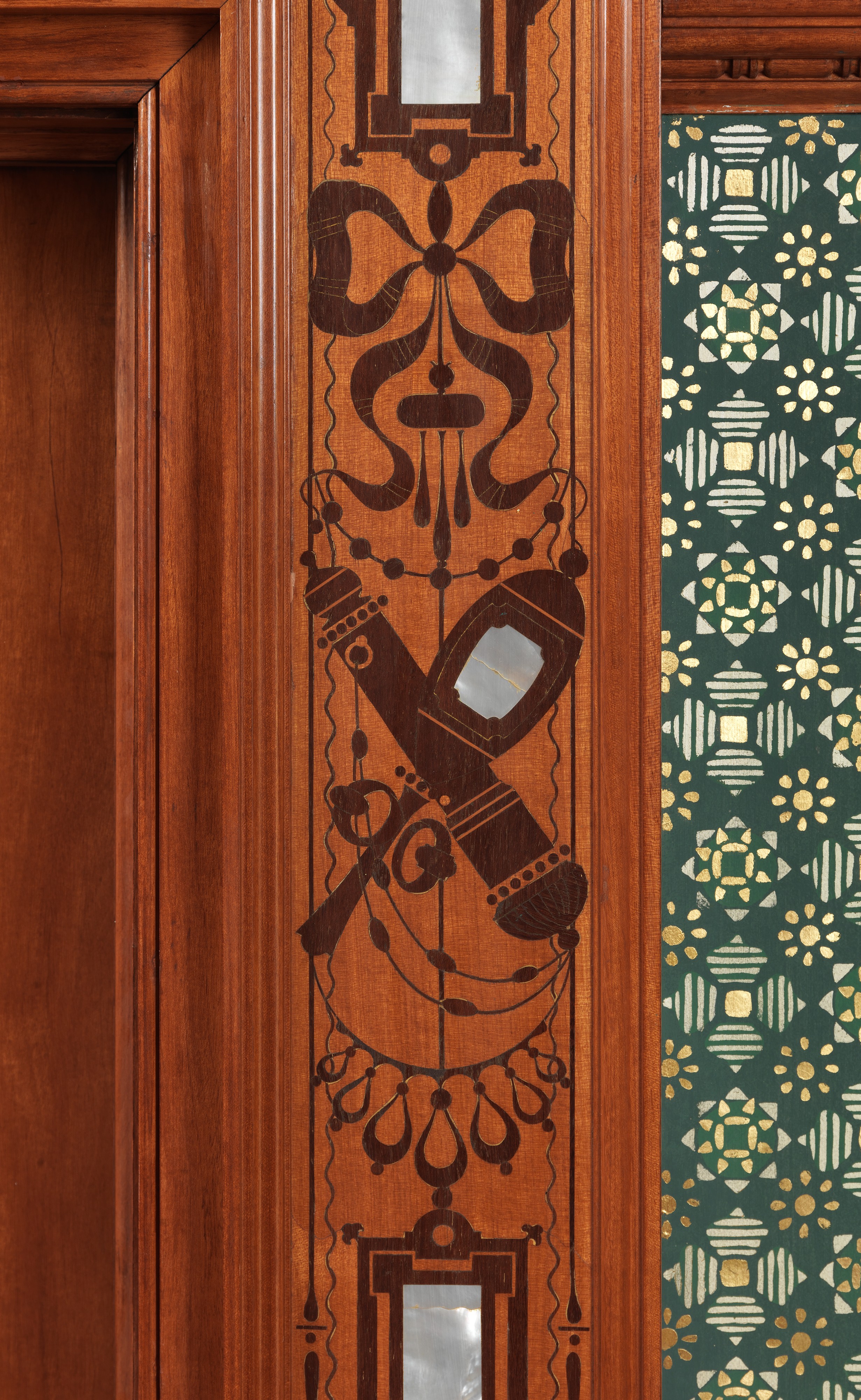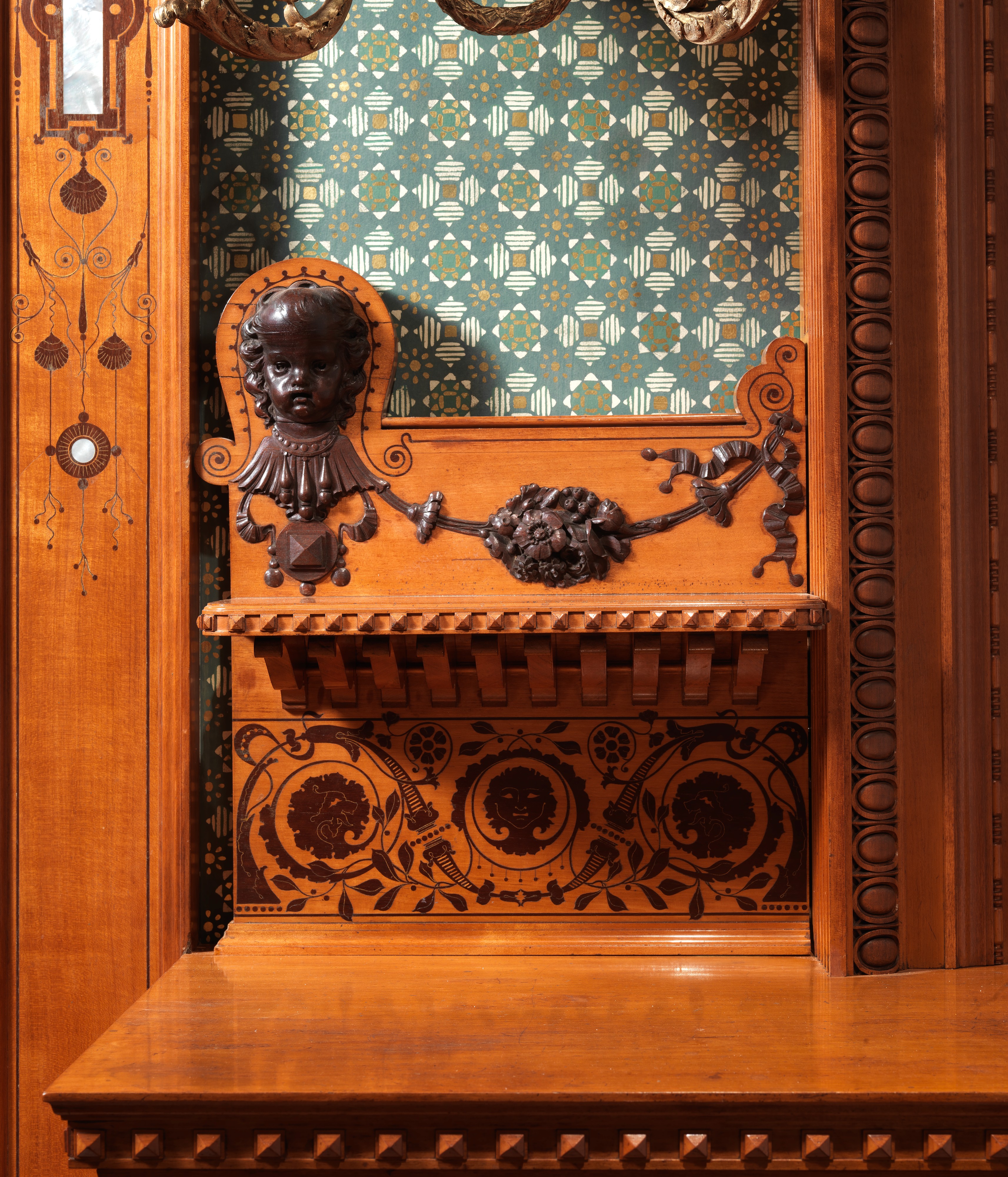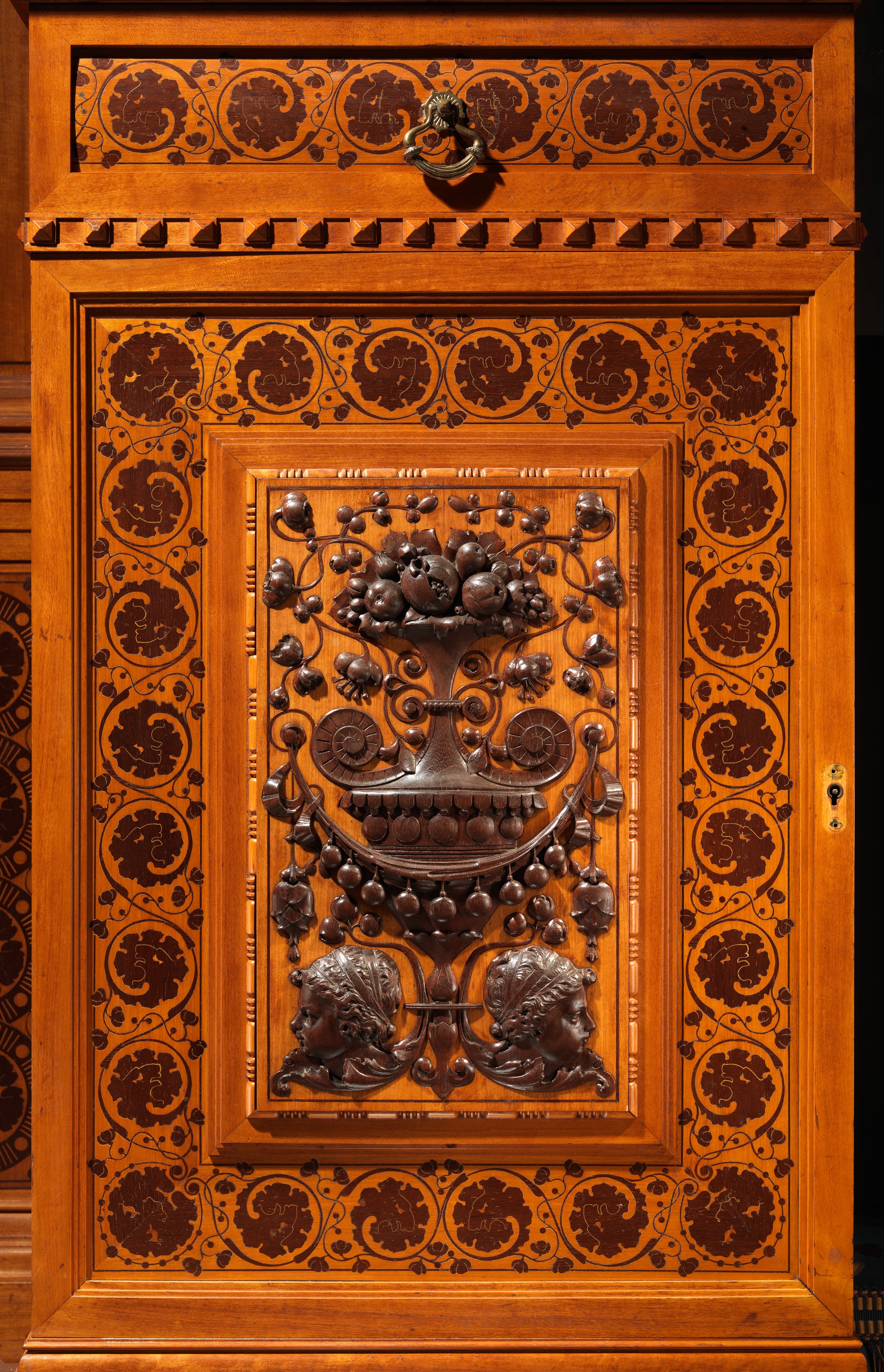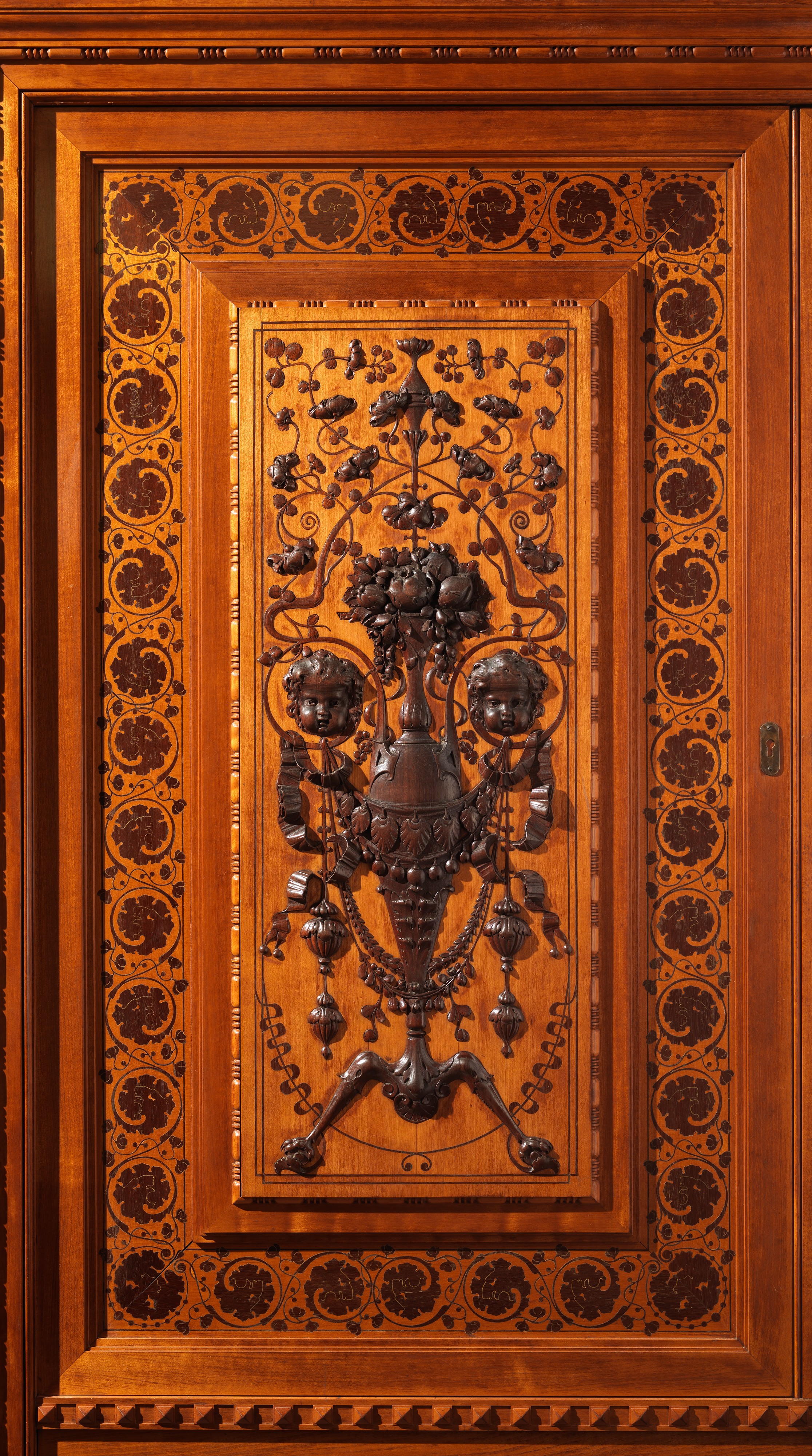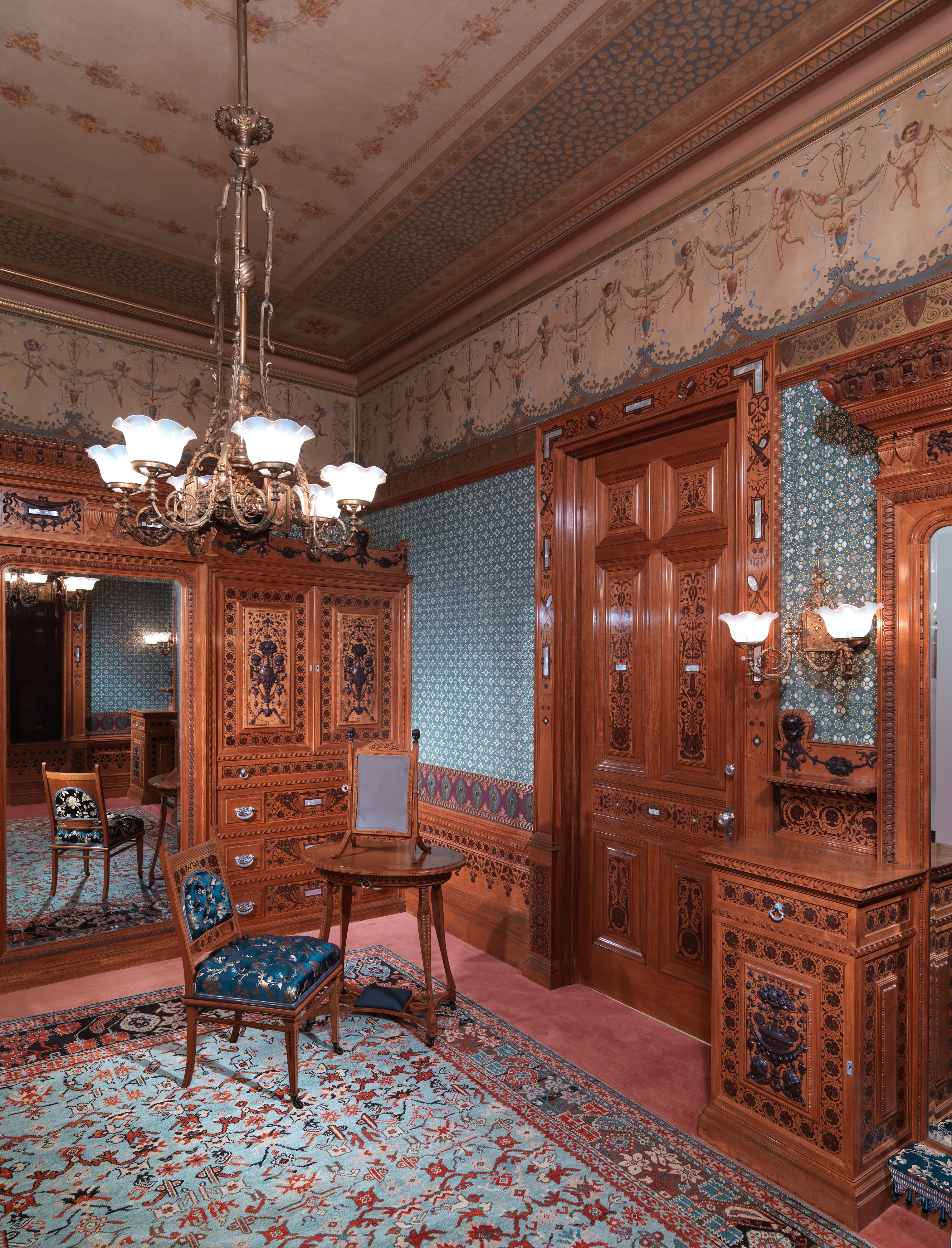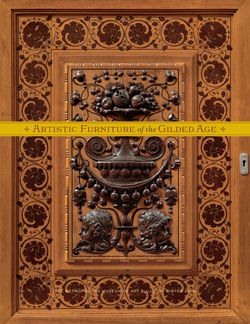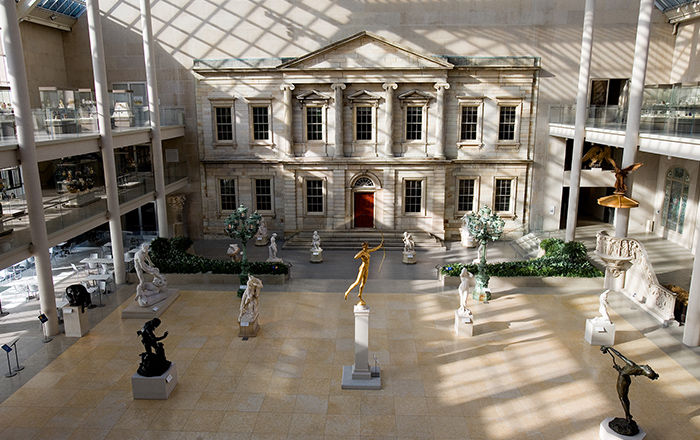Architectural woodwork and paneling
George A. Schastey & Co. American
George A. Schastey American, born Germany
In 1881, Arabella Worsham, then-mistress of railroad magnate Collis P. Huntington, hired George A. Schastey & Co. to decorate her townhouse at 4 West Fifty-Fourth Street in New York City. The resulting artistic interiors would have been considered the height of cosmopolitan style in the early 1880s and were emblematic of Worsham’s quest to fashion her identity as a wealthy, prominent woman of taste. When Worsham married Huntington in 1884, she sold the house, fully furnished, to John D. and Laura Spelman Rockefeller, who made few subsequent changes to the decorations. Following Mr. Rockefeller’s death in 1937, the house was demolished, yet some furnishings, large-scale architectural elements, and three interiors were preserved, and the rooms were donated to local museums by John D. Rockefeller Jr.
Installed at the Metropolitan Museum of Art in 2015 (Gallery 742), the dressing room and its decorative scheme is appropriately complex and opulent. The woodwork is of the finest materials: shimmering satinwood embellished with tropical purpleheart (named for its deep purplish hue) and lustrous mother-of-pearl. The door and window surrounds feature marquetry decoration depicting myriad objects from a lady of refinement’s toilette: at the sides, trophies of a comb, scissors, and hand mirror—all for the coiffure—and another of small sewing accoutrements including a needle case on a chain and darning egg. Various necklaces, earrings, hair combs, and other jewel motifs are interspersed throughout. The built-in cabinets and wardrobe feature playfully carved and intricately inlaid motifs inspired by the late Renaissance. A crenelated cornice tops the wall-long wardrobe, punctuated with three-dimensional, carved putti heads and garlands of beaded necklaces. On the cabinet doors, stylized marquetry of leafy vines and lions’ heads in profile frame exquisitely carved decorative reliefs, also referencing fifteenth-century designs.
Although few objects can be attributed to George A. Schastey & Co., the high quality of their work – as seen in the dressing room woodwork – was comparable to other prominent firms of the Gilded Age, including Herter Brothers and Pottier & Stymus. At its peak in the early 1880s, the firm employed at least 125 people in its workshops. Their distinctive designs are steeped in Renaissance sources with flourishes from the Islamic world and the British design reform movement.
This image cannot be enlarged, viewed at full screen, or downloaded.
This artwork is meant to be viewed from right to left. Scroll left to view more.
